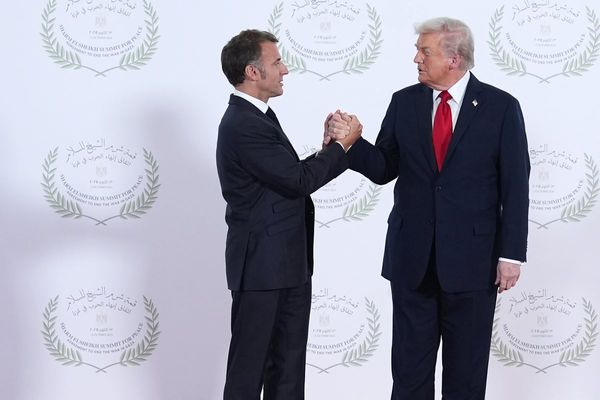
There’s this watercolour painting I can’t stop looking at by Neville W Cayley, one of the early figures of the Australian twitcher movement. Produced some time in the 1930s, it depicts a brace of glossy black cockatoos sat in a line on a branch. Three of them are captured in profile, looking rather stately: you can see the yellow trifle of feathers around the neck of the female glossies, the shock of red in the tail of the gents, all those blueish wings.
But then there’s the glossy in the middle. Head tilted to the side, its neck craning, it is looking straight out – at Cayley, probably. And also, I can’t help but feel, looking at us now in the year 2025, as we prepare to vote for the Guardian’s Australian bird of the year. A look rich in curiosity and humour, eyes winking, which doesn’t speak, but if it did, would say: nominate us for bird of the year, then.
Not that glossies would ever loudly advocate for themselves. Black cockatoos are, on the whole, more shy than their white counterparts, a fact that was noted all the way back in Walkabout magazine in 1945. Glossies are one of the smallest of the black cockatoos and the shyest. They pick one tree that they return to year after year – their home. And they feed almost exclusively on the nuts of she-oak, which they drop quietly to the forest floor when they’re done gnawing through them.
There’s a sort of unassuming gentle beauty to the glossy that marks them out from other cockatoos. Indeed, here’s another little fact about glossies that’s always lit me up: most of them are left-handed. A scientific article published in 1993 notes that one intrepid scientist spent nine hours observing a bonded pair of glossies: one left-handed and one a rare right-hander.
I think about that star-crossed couple a lot; almost as much as I think about Cayley’s cocked-head glossy. When I’m feeling good, I think about them and marvel at the extraordinary personality of birds. And when I’m feeling bad, I think about those three glossies from across history, all of them surely dead now, and the scale of their current loss becomes almost unbearable.
Which is the other reason that I urge you to nominate them for the shortlist – glossies are marked vulnerable, close to endangered, in almost every territory where they reside. The future of the glossy looks bleak. Rampant logging and risk of bushfires is threatening their homes. That 1945 Walkabout article ends with this heartbreaking line: “It is a blessing that the birds are extremely shy … for these characteristics combine to enable the species to survive the destructive hands of man.”
There’s nowhere to go to escape the destructive hands of man any more. But we know all about the threat by now. (It’s us.) What we should think about, rather than the aggressor, is the victim.
There’s this line from the novel Gould’s Book of Fish by Richard Flanagan that applies here: “I began to wonder whether, as each fish died, the world was reduced by the amount of love that you might know for such a creature.” It’s as true of glossies as it is of fish. The loss of one is the loss of an entire world.
Which brings me back to Cayley’s painting and the glossy staring out at us. You can read anything into the gaze of birds. That’s maybe why some of us love them so much – they’re so clearly intelligent, but that intelligence is so hard to read. Who knows what Cayley’s glossy is thinking. I hope it’s something kindly. Not fear. Or, even worse: I hope it’s not a gentle curiosity towards humanity as it regards us, because if it is, that curiosity will have been brutally betrayed.
Regardless, I cannot avoid Flanagan’s conclusion – that the death of a single cockatoo is a kind of apocalypse, a permanent reduction in the finite resource of love. I think the only reason we don’t think like this is because it’s unbearable, not because it’s untrue. The destruction of glossies is not the mere loss of a species, one that can be chalked up as a statistic on a page in a book that will then be filed away. It’s the loss of a gentle gaze; a cocked head. A creature, raising their left hand to their beak, and thinking of home.
• Joseph Earp is a critic, painter and novelist. His latest book is Painting Portraits of Everyone I’ve Ever Dated







